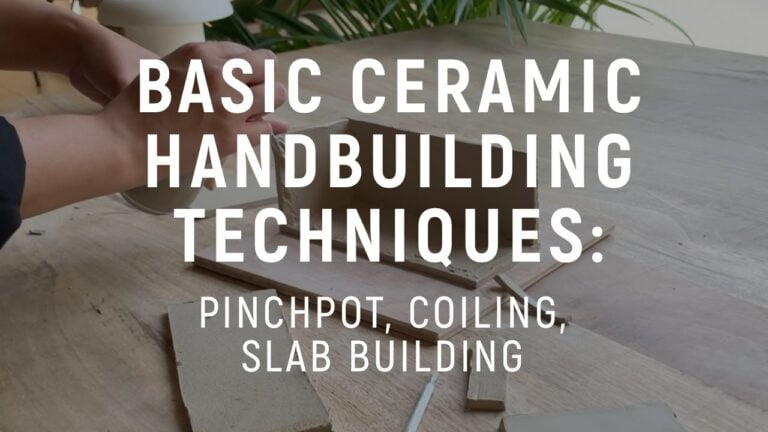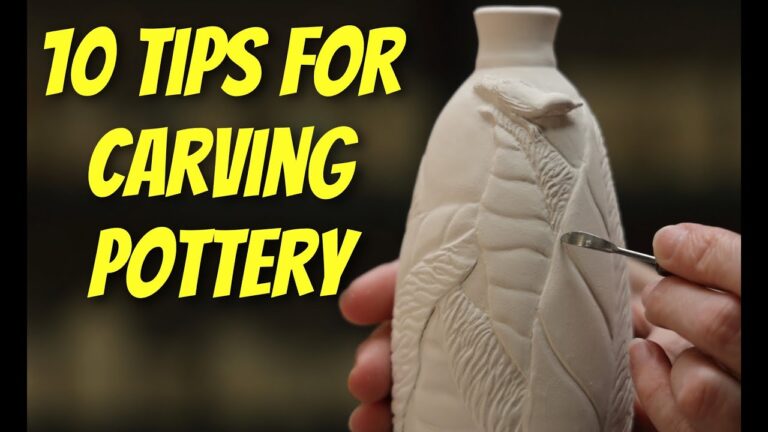Earthenware pottery has been a cherished art form for centuries, with its unique and rustic appeal. From the shaping of the clay to the final firing, the process of creating earthenware pottery is a fascinating blend of tradition and creativity. In this article, we will delve into the various stages of the earthenware pottery process, exploring the techniques and tools used by artisans to craft these timeless pieces. Whether you’re a pottery enthusiast or simply curious about the art form, this in-depth look at earthenware pottery is sure to captivate and inspire.
What is earthenware pottery?
Earthenware pottery is a type of ceramic made from clay that is fired at a relatively low temperature, resulting in a porous and rustic finish. This traditional form of pottery has been used for centuries to create functional and decorative items such as bowls, vases, and plates. Its natural earthy tones and textured surface give earthenware pottery a warm and inviting aesthetic that adds a touch of rustic charm to any home.
The process of creating earthenware pottery involves shaping the clay by hand or on a wheel, allowing it to dry, and then firing it in a kiln. The final product is often glazed to enhance its durability and visual appeal. Earthenware pottery is beloved for its versatility, affordability, and timeless appeal, making it a popular choice for both everyday use and as decorative pieces in interior design.
How is earthenware pottery made?
Earthenware pottery is made by shaping clay into the desired form, such as a bowl or vase, and then allowing it to dry partially. Once the clay has dried slightly, it is fired in a kiln at a relatively low temperature, typically around 1,000 to 1,150 degrees Celsius. This firing process helps to harden the clay and remove any remaining moisture, making the pottery more durable.
After the initial firing, the earthenware pottery is typically glazed with a liquid mixture of minerals and oxides, which can add color and a glossy finish to the piece. The pottery is then fired again at a slightly higher temperature, usually around 1,100 to 1,200 degrees Celsius, to melt the glaze and create a smooth, protective coating. This final firing process not only enhances the aesthetic appeal of the pottery but also makes it more resistant to water and wear.
What are the benefits of using earthenware pottery?
Earthenware pottery offers a range of benefits that make it a popular choice for both functional and decorative purposes. One key advantage of earthenware is its affordability, making it accessible to a wide range of consumers. Its porous nature also allows for better airflow, which can help maintain the freshness of stored goods such as fruits and vegetables.
In addition to its practical advantages, earthenware pottery is also known for its aesthetic appeal. The natural tones and textures of earthenware can add a rustic and earthy charm to any space, making it a popular choice for home decor. The versatility of earthenware allows for a wide range of designs and patterns to be created, making it a great option for those looking to add a touch of personality to their living spaces.
Furthermore, earthenware pottery is durable and long-lasting, with proper care and maintenance. Its ability to retain heat also makes it an excellent choice for cooking and serving food, as it can help keep dishes warm for longer periods of time. Overall, the benefits of using earthenware pottery extend beyond just functionality, making it a versatile and attractive choice for a wide range of uses.
How should I care for my earthenware pottery pieces?
Earthenware pottery pieces require proper care and maintenance to ensure their longevity and beauty. To begin, it is important to hand wash your earthenware pottery with mild soap and warm water, as it is not safe for use in the dishwasher. Additionally, make sure to dry your pottery thoroughly after washing to prevent any moisture from being trapped, which can lead to mold or mildew. Finally, store your earthenware pottery in a cool, dry place to prevent any damage from moisture or extreme temperatures. By following these simple care instructions, you can preserve the beauty and integrity of your earthenware pottery pieces for years to come.
Taking care of your earthenware pottery pieces is essential for preserving their quality and appearance. Avoid using abrasive cleaners or scrubbing too vigorously, as this can damage the delicate surface of the pottery. It is also important to handle your pottery with care to prevent any chips or cracks. When displaying your earthenware pottery, be mindful of its placement to avoid accidental damage. With proper care and attention, your earthenware pottery pieces can remain a cherished part of your home decor for generations.
In addition to regular cleaning and careful handling, it is important to be mindful of the type of liquids or foods that come into contact with your earthenware pottery. Acidic or oily substances can cause damage to the glaze and surface of the pottery, so it is best to avoid using these types of items with your earthenware. By being conscious of what comes into contact with your pottery and following proper care guidelines, you can ensure that your earthenware pieces remain in excellent condition for years to come.
Mastering the Pottery Wheel: A Step-by-Step Guide
Are you ready to elevate your pottery skills to the next level? With “Mastering the Pottery Wheel: A Step-by-Step Guide,” you will be guided through the intricate process of creating beautiful ceramic pieces with ease. This comprehensive guide breaks down each step of using the pottery wheel in a clear and concise manner, making it easy for beginners and experienced potters alike to follow along.
From centering the clay to shaping and trimming your piece, this guide covers everything you need to know to create stunning pottery on the wheel. With detailed instructions and helpful tips, you will learn the techniques and skills necessary to master this art form. Whether you are looking to hone your craft or just starting out, “Mastering the Pottery Wheel: A Step-by-Step Guide” is your go-to resource for creating pottery that will impress.
With practice and dedication, you can unlock your creativity and create pottery that reflects your unique style and vision. “Mastering the Pottery Wheel: A Step-by-Step Guide” empowers you to unleash your artistic potential and explore the endless possibilities of working with clay. Whether you are passionate about pottery as a hobby or a profession, this guide will help you develop the skills and confidence needed to excel in this timeless craft.
From Clay to Kiln: Crafting Beautiful Earthenware
Discover the ancient art of transforming raw clay into stunning earthenware with our comprehensive guide, “From Clay to Kiln: Crafting Beautiful Earthenware.” Learn the traditional techniques and modern methods used by skilled artisans to mold, shape, and fire clay into exquisite pottery. Whether you’re a beginner or experienced potter, this book is your essential tool for creating functional and decorative earthenware pieces.
Explore the rich history and cultural significance of earthenware, and gain insight into the creative process behind crafting these timeless treasures. From hand-building to wheel-throwing, “From Clay to Kiln” provides step-by-step instructions and expert tips to help you master the art of pottery. Unleash your creativity and learn to produce unique and personalized earthenware that will impress friends, family, and customers alike.
With its beautiful illustrations and detailed explanations, “From Clay to Kiln” is the ultimate resource for anyone passionate about pottery. Whether you’re interested in making your own dinnerware or creating artful sculptures, this book will inspire and guide you through the transformative journey of working with clay. Embrace the art of pottery-making and uncover the satisfaction of crafting beautiful earthenware with this invaluable guide.
In summary, the earthenware pottery process showcases the artistry and craftsmanship of skilled artisans who transform raw clay into beautiful and functional pieces. From shaping and molding to firing and glazing, each step in the process contributes to the unique character and charm of earthenware pottery. The rich history and cultural significance of this age-old craft continue to captivate and inspire individuals around the world, ensuring its enduring popularity and relevance in the world of ceramics.



